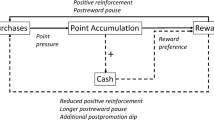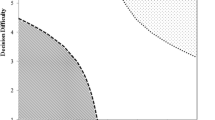Abstract
Point-based frequency reward programs are widely used by retailers as a sales promotion strategy. To promote a specific product category, retailers offer more favorable reward ratios so that members can earn extra points. This paper examines the impact of reward ratio variations on sales in a multicategory setting and compares the effectiveness of the reward and price promotion strategies. We estimate a multivariate probit model using scanner data of member purchases in four categories, grouped into two category pairs. We found that increasing the reward ratio in a category positively affected its choice probability and that the presence of rewards promotions also had positive impact on the choice probability of nonpromoted but closely related category within the same category pair. As forms of sales promotion, price discounts and reward promotions were shown to substitute for each other. We constructed and computed a measure, the rate of substitution, to quantify the effects of substitution. The financial implications of holding reward promotions are computed and discussed.
Similar content being viewed by others
Notes
In the following discussion, we use the term “reward ratio” to refer to the number of reward points a consumer earns for every unit of money spent on particular purchase. Therefore, reward promotions correspond to events in which reward ratios are above the regular level.
Yuan is the unit of the Chinese currency and was approximately worth 1/7 US dollar for the data period.
The prices are standardized as items within the same category may be sold in packages of different sizes, or be measured in a variety of units (milliliters or grams in the case of facial lotions, number of pieces in the case of facial masks, bottles of different sizes for shampoos), hence impossible to compare prices directly. The details of price standardization are available from the authors upon request.
Equation 5 is derived from the following equality: \( \frac{\partial {U}_{kit}}{\partial {\mathrm{Price}}_{kit}}d{\mathrm{Price}}_{kit}=\frac{\partial {U}_{kit}}{\partial ln{\mathrm{Price}}_{kit}}\frac{\partial ln{\mathrm{Price}}_{kit}}{\partial {\mathrm{Price}}_{kit}}d{\mathrm{Price}}_{kit}={\beta}_{kir}\frac{\partial {\mathrm{Price}}_{kit}}{{\mathrm{Price}}_{kit}} \).
As the regular reward ratio at the retailer is 0.1 reward point for each yuan spent, and one reward point can be redeemed for 0.1 yuan, assuming all reward points are redeemed eventually, the effective costs for the retailer is equivalent to 1 % price cut.
We are indebted to an anonymous reviewer for suggesting this analysis.
References
Berman, B. (2006). Developing an effective customer loyalty program. California Management Review, 49(1), 123–148.
Blattberg, R. C., Briesch, R., & Fox, E. J. (1995). How promotions work. Marketing Science, 14(3), G122–G132.
Bolton, R. N., Kannan, P. K., & Bramlett, M. D. (2000). Implications of loyalty program membership and service experiences for customer retention and value. Journal of the Academy of Marketing Science, 28(1), 95–108.
Dorotic, M., Fok, D., Verhoef, P. C., & Bijmolt, T. H. A. (2011). Do vendors benefit from promotions in a multi-vendor loyalty program? Marketing Letters, 22(4), 341–356.
Drèze, X., & Hoch, S. J. (1998). Exploiting the installed base using cross-merchandising and category destination programs. International Journal of Research in Marketing, 15(5), 459–471.
Drèze, X., & Nunes, J. C. (2004). Using combined-currency prices to lower consumers’ perceived cost. Journal of Marketing Research, 41(1), 59–72.
Drèze, X., & Nunes, J. C. (2008). Feeling superior: the impact of loyalty program structure on consumers’ perceptions of status. Journal of Consumer Research, 35(6), 890–905.
Duvvuri, S. D., Ansari, A., & Gupta, S. (2007). Consumers’ price sensitivities across complementary categories. Management Science, 53(12), 1933–1945.
Hartmann, W. R., & Viard, V. B. (2008). Do frequency reward programs create switching costs? A dynamic structural analysis of demand in a reward program. Quantitative Marketing Economics, 6(2), 109–137.
Henderson, C. M., Beck, J. T., & Palmatier, R. W. (2011). Review of the theoretical underpinnings of loyalty programs. Journal of Consumer Psychology, 21(3), 256–276.
Keh, H. T., & Lee, Y. H. (2006). Do reward programs build loyalty for services? The moderating effect of satisfaction on type and timing of rewards. Journal of Retailing, 82(2), 127–136.
Kivetz, R., & Simonson, I. (2002). Earning the right to indulge: effort as a determinant of customer preferences toward frequency program rewards. Journal of Marketing Research, 39(2), 155–170.
Kivetz, R., Urminsky, O., & Zheng, Y. (2006). The goal-gradient hypothesis resurrected: purchase acceleration, illusionary goal progress, and customer retention. Journal of Marketing Research, 43(1), 39–58.
Kopalle, P. K., Sun, Y., Neslin, S. A., Sun, B., & Swaminathan, V. (2012). The joint sales impact of frequency reward and customer tier components of loyalty programs. Marketing Science, 31(2), 216–235.
Lal, R., & Bell, D. E. (2003). The impact of frequent shopper programs in grocery retailing. Quantitative Marketing and Economics, 1(2), 179–202.
Leeflang, P. S. H., & Parreño-Selva, J. (2012). Cross-category demand effects of price promotions. Journal of the Academy of Marketing Science, 40(4), 572–586.
Lewis, M. (2004). The influence of loyalty programs and short-term promotions on customer retention. Journal of Marketing Research, 41(3), 281–292.
Liu, Y. (2007). The long-term impact of loyalty programs on consumer purchase behavior and loyalty. Journal of Marketing, 71(4), 19–35.
Manchanda, P., Ansari, A., & Gupta, S. (1999). The “shopping basket”: a model for multicategory purchase incidence decisions. Marketing Science, 18(2), 95–114.
Mauri, C. (2003). Card loyalty: a new emerging issue in grocery retailing. Journal of Retailing and Consumer Services, 10(1), 13–25.
Melnyk, V., & van Osselaer, S. M. J. (2012). Make me special: gender differences in consumers’ responses to loyalty programs. Marketing Letters, 23(3), 545–559.
Narasimhan, C., Neslin, S. A., & Sen, S. K. (1996). Promotional elasticities and category characteristics. Journal of Marketing, 60(2), 17–30.
Nijs, V. R., Dekimpe, M. G., Steenkamps, J.-B. E. M., & Hanssens, D. M. (2001). The category-demand effects of price promotions. Marketing Science, 20(1), 1–22.
Postrel, R., & Hlavinka, K. (2012). An open economy: the evolution of loyalty in the United States. Available from www.colloquy.com.
Russell, G. J., Ratneshwar, S., Shocker, A. D., Bell, D., Bodapati, A., Degeratu, A., et al. (1999). Multiple-category decision-making: review and synthesis. Marketing Letters, 10(3), 319–332.
Sa Sa International Holdings Limited (2013). Available at http://corp.sasa.com/en/investor-relations/financial-highlights/. Accessed on 16 October 2013
Seetharaman, P. B., Chib, S., Ainslie, A., Boatwright, P., Chan, T., Gupta, S., et al. (2005). Models of multi-category choice behavior. Marketing Letters, 16(3,4), 239–254.
Taylor, G. A., & Neslin, S. A. (2005). The current and future sales impact of a retail frequency reward program. Journal of Retailing, 81(4), 293–305.
The Economist. (2005). In terminal decline? January 6.
Yahoo! Finance (2013). Available at http://biz.yahoo.com/ic/733.html. Accessed on 16 October 2013
Yi, Y., & Jeon, H. (2003). Effects of loyalty programs on value perception, program loyalty, and brand loyalty. Journal of the Academy of Marketing Science, 31(3), 229–240.
Zhang, J., & Breugelmans, E. (2012). The impact of an item-based loyalty program on consumer purchase behavior. Journal of Marketing Research, 49(1), 50–65.
Author information
Authors and Affiliations
Corresponding author
Rights and permissions
About this article
Cite this article
Wei, L., Xiao, J. Are points like money? An empirical investigation of reward promotion effectiveness for multicategory retailers. Mark Lett 26, 99–114 (2015). https://doi.org/10.1007/s11002-013-9270-1
Published:
Issue Date:
DOI: https://doi.org/10.1007/s11002-013-9270-1




